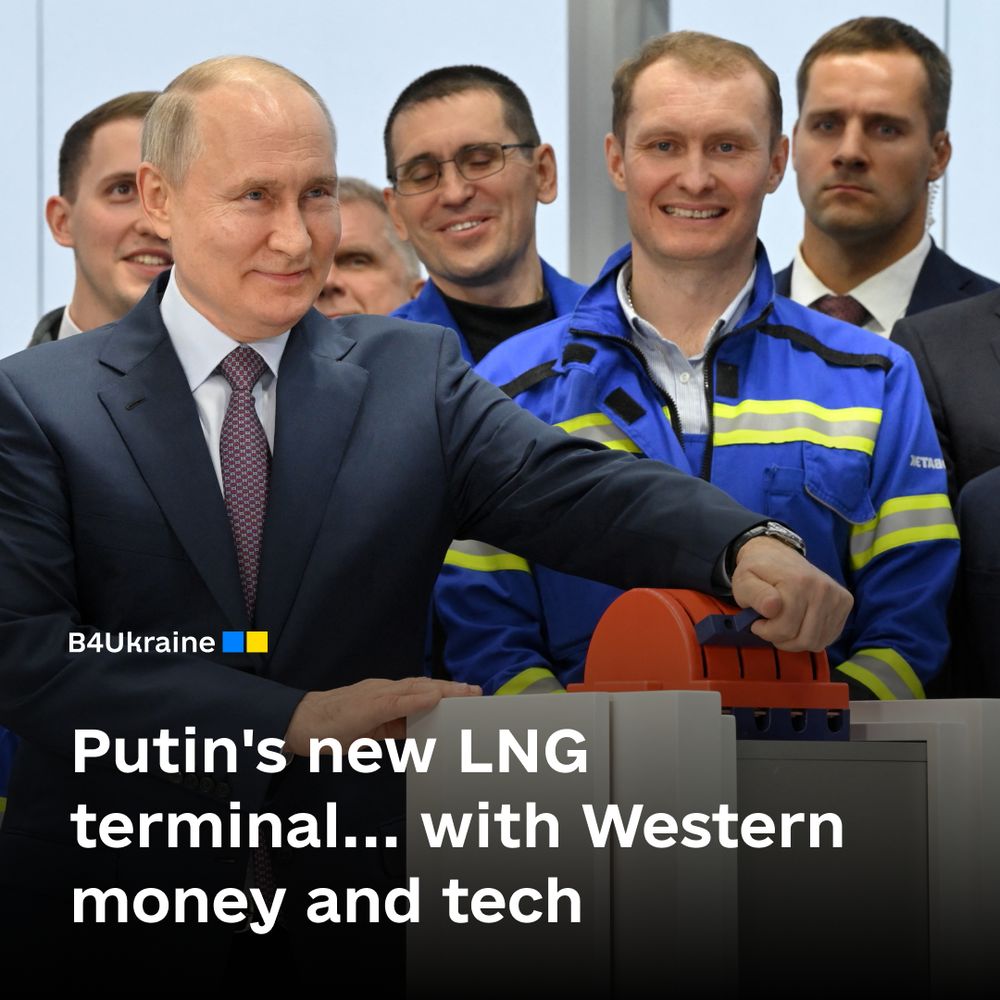
The news story, featuring a photo of smiling Vladimir Putin taken in the village of Belokamenka in Murmansk region in July 2023, did not produce a big news splash, despite the significance of the context. The picture showed Russia’s authoritarian leader launching the first natural gas liquefaction line for the Arctic LNG-2, an extensive natural gas extraction and liquefaction project under construction despite western sanctions. What the picture failed to capture, however, is the substantial involvement of many western companies in ensuring the completion of Arctic LNG-2. If the West is indeed committed to reducing its dependence on Russia’s fossil fuels, Arctic LNG-2 is the place to start.
Natural gas exports vs LNG
Russia’s invasion of Ukraine in February 2022 resulted in comprehensive sanctions aimed at curtailing the aggressor country’s income from its energy reserves, often used as a geopolitical weapon. The EU’s and UK imposed a ban on the imports of Russian crude oil and petroleum-related products, while natural gas remained untouched by Western sanctions.
The EU’s unwavering support for Ukraine compelled Gazprom, the state-owned Russian company, to arbitrarily reduce the flow of Russia’s gas via its largest European pipeline, Nord Stream 1, which was indefinitely closed in September 2022. A few weeks later, both North Stream 1 and 2 pipelines suffered extensive damage in a series of explosions that remain unexplained until today.
These developments naturally led to a significant decline in Russia’s pipeline gas exports to Europe. The exports of Russia’s liquified natural gas (LNG), however, tell a different story. Since the start of the invasion of Ukraine, Russia has been able to increase its deliveries of LNG to the EU by nearly 30%. According to B4Ukraine’s member Centre for Research on Energy and Clean Air (CREA), the EU is the number one buyer of Russian LNG with 50% of purchases made by the block, followed by China with 23% and Japan with 16%.
Western know-how for Russia’s gas project
The ongoing construction of Arctic LNG-2 on the Gydan Peninsula in Siberia is potentially capable of producing 19 million tonnes of LNG annually if fully commissioned. It undeniably highlights Russia’s ambition to gain 20% of the global LNG market by 2035 (its current share is around 8%), significantly boosting its budget and prolonging its aggressive campaign against Ukraine.
Arctic LNG-2 is primarily owned by Russia’s largest private natural gas producer, Novatek, and France’s Total Energies, which holds a 10% stake. It is the country’s third-largest LNG project, following Gazprom-led Sakhalin 2 in the Pacific and Yamal LNG, also under Novatek’s control.
What sets Arctic LNG-2 apart is the timing of its ongoing construction and the involvement of many western companies supplying their high tech equipment.
Recent media reports by the German ZDF/Der Spiegel and the French Le Monde point in the direction of several western firms, including Germany’s Linde Group and France’s Technip Energies, in enabling the development of Arctic LNG-2. Russian customs data reveals that since the invasion of Ukraine, the project’s leading trading company in Russia has been supplied with equipment from Europe worth US$400 million.
Germany’s major industrial player Linde Group entered into a joint venture partnership with a Russian-based company in Saint Petersburg in order to ensure the production of heat exchangers, which are critical for transforming natural gas into its liquid form. France’s Technip has played a pivotal role in managing the construction of Arctic LNG-2 since 2019, and the firm continued to supply its products to Russia throughout the summer of 2022.
The United Kingdom’s Hill & Smith provided cryogenic pipe supports, Italy’s Saipem played a crucial coordinating role and supplied electrical cables, while the U.S. engineering firm Baker Hughes provided the turbines.
While sanctions circumvention is hard to prove for all involved parties, one thing is clear: Western firms have enabled the construction of Russia’s massive Arctic LNG-2 project.
“The lethal Russian weapons were paid for by growing Russian LNG exports that were facilitated by European companies. How can democratic and supportive European leaders, on the one hand, say they are against the Russian brutality done against us while, on the other hand, allow European companies to continue supporting Russia’s fossil gas expansion?” said Svitlana Romanko from B4Ukraine’s member Razom We Stand.
What can be done? Despite significant progress made by Russia in completing its Arctic LNG-2 terminal, two-thirds of the project remains unfinished. This gives the EU “a unique opportunity to act”, argues Oleh Savytskyi, a senior campaign manager at Razom We Stand, in a recent Op-Ed published in Euractiv jointly with Anti-Corruption Data Collective. The authors call for the upcoming 12th package of EU sanctions to:
- Ban the transhipment of Russian LNG via EU ports and its re-export to world markets.
- Impose targeted sanctions on companies involved in the construction and operations of Arctic LNG-2 following the example of the US Government, which targeted the project in two consecutive packages on 14 September 2023 and 2 November 2023.
- Enforce export controls against any equipment, software or technology provision for Russian energy projects such as Arctic LNG 2.
As Arctic LNG-2 is considered one of many so-called ‘Carbon Bombs,’ whose completion will result in emitting over a gigaton of CO2 emissions over its lifetime, the EU’s policy response becomes even more paramount. It will not only constitute a critical aspect of the continent’s commitment to reduce its unhealthy reliance on Russian fossil fuels, but will also contribute to protecting the environment and saving innocent lives by limiting Russia’s ability to finance its illegal war.
